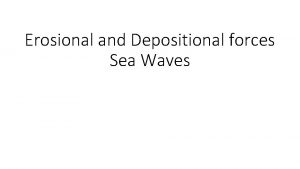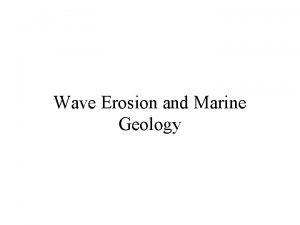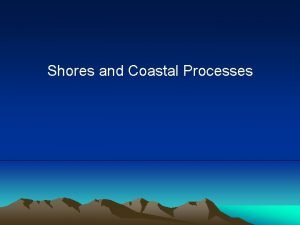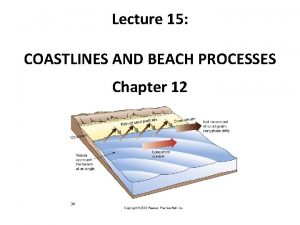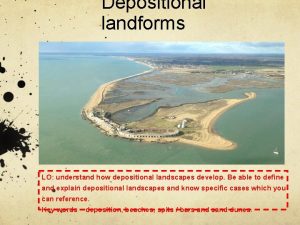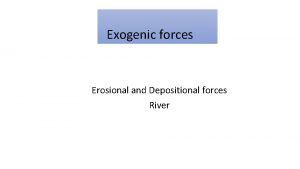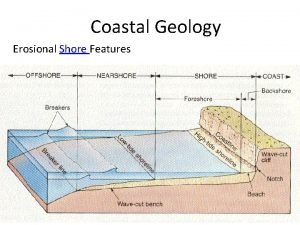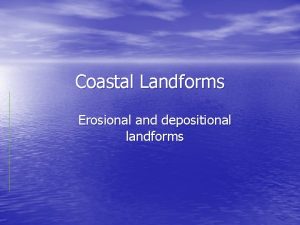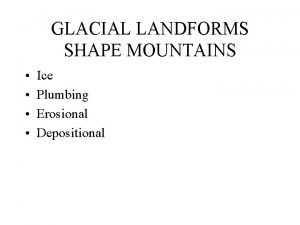Erosional and Depositional forces Sea Waves Work of






- Slides: 6

Erosional and Depositional forces Sea Waves

Work of Sea Waves Erosional – • Sea waves continuously strike at the cliff face. The water contains sand other materials that grind away at the rock until cracks appears. Over time they become larger and wider. Thus, hollow like caves are formed on the rocks known as sea caves. • If the cave is formed in a headland, these cavities become bigger and may eventually break through to the other side forming a sea arch. • The arch will gradually become bigger until it can no longer support the top of the arch. When the arch collapses, it leaves the headland on one side and a stack (a tall column of rock) on the other. • The stack, on further erosion weakens and it will eventually collapse to form a stump.


CLIFF AND HEADLAND CLIFF: A cliff is a vertical rock face on the coast. HEADLAND: A headland is a bit of coastal land that juts into the sea.

Depositional Features of Sea Waves • Beaches are a common feature of a coastline. Beaches are made up of eroded material that has been transported from elsewhere and deposited by the sea. • A beach is a geologic formation that is located along a large body of water, including lakes, rivers, and oceans. • Beaches are characterized by the presence of tiny pieces of organic sediment. The sediments may be composed of sand, rock, shell, algae, or pebbles.

Sea Cliff and Beach • The steep rocky coast rising almost vertically above sea water is called a sea cliff. (erosional) • The sea waves deposit sediments along the shores forming beaches. (depositional)
